Exhibition glossary
Get your work in a gallery with our essential jargon-buster for putting on a top exhibition!
If you want to put on an exhibition, you'll need to know the right lingo. As well as getting your head around the most common art terms you'll need to know, here we've noted the most useful exhibition terms that you'll need when working with a gallery.
Acid burn
Small yellowish areas and fragile patches caused by acid emitted from components of the artwork.
Affordable art
A growing number of shows and fairs have grown to support what is called ‘affordable art’ – work by budding artists that's generally taken to have a ceiling of £3,000.
Arnheim, Rudolf
Influential psychologist and art theorist who believed the key to expression in visual art lies in the rendering of dynamic forces in fixed compositions.
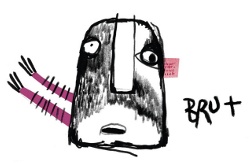
Art brut
Another term for ‘outsider art’ – art made outside the boundaries of accepted cultural norms or the realm of academically recognised fine art.
Artist’s proofs
Having been checked by the creator for registration, colour fidelity and clarity, the artist’s proof was traditionally the first successful image of a print run.
Biennale
A term used to describe an international art event held every two years. Venice is the first recorded in 1895; today there are many, all the way from Liverpool to So Paulo.
Budget
The often scarce resource here is your wall space. Leave plenty of room between unframed or abstract artworks; the eye understands framed works more easily, so these can be closer together.
Cancellation plate
If you’re running a limited edition, collectors may wish to see evidence that no further examples will be forthcoming. For an etching, this usually means scoring across the printing plate. It is customary to print a ‘cancellation proof’, thus adding to the scarcity value of the print.
Catalogue
A publication detailing the works appearing in a show – something for punters to take away and scrutinise. You may want to ask if you can design this yourself!
Centrepiece
The centre or most important feature in your exhibition. It can be good practice to put your most significant piece in the middle and work outwards.
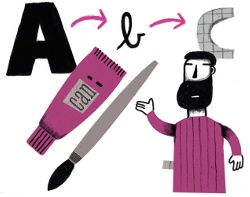
Certificate of Authenticity
A Certificate of Authenticity (COA) identifies the processes, techniques and materials used to create an artwork, and gives artist information as proof of its authenticity.
Chop
Picture-frame mouldings ‘chopped’ to size by the supplier for a specific frame.
Conservation framing
This framing approach uses entirely acid-free stock so your artwork will be isolated from many of the problems associated with ageing materials.
Corrugated corners
Little wedges of cardboard that fit around the corners of a framed artwork to prevent damage if, for example, it's dropped.
Curator/artist curator
Originally meaning ‘keeper’, curators these days don’t so much keep as stage exhibitions. Having an artist-curator is often considered to result in a more sensitive show, but the wisdom of this being one of the artists actually in the exhibition is questionable.
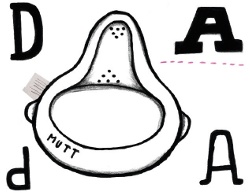
Dada
Dadaism began in Switzerland and is seen as a reaction by artists to the horror of World War I. Their aim was to annihilate traditional values in art and create something new and anarchic in its place.
Dewey, John
An American philosopher, psychologist and educational reformer. Dewey’s views on art helped shift the consideration away from the artwork itself towards art as experience; that of the creator and of the viewer.
Dry mounting
A process that uses dry adhesive tissues to mount paper artwork or photographs onto board, using heat and pressure.
Eye level
This refers to an estimated average visitor eye-level, where the centre of your images should be hung. Don’t worry if the tops and bottoms of your images don’t line up; the viewer’s brain will handle this better than the alternative hanging solutions.
Frames
They can be minimalist, ornate, wooden, plaster moulding, plastic, painted – you name it, someone has probably turned it into a frame. Choosing the right one can be an ordeal, and an expensive one at that.
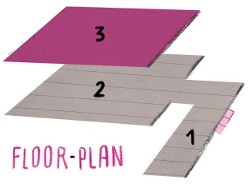
Floor plan
A map showing the size and locations of exhibit spaces.
Gicle
A word coined in 1991 by printmaker Jack Duganne to refer to the process of producing fine art prints from a digital source using ink-jet printing.
Guerilla art
A method of art-making where the artist leaves anonymous art pieces in public places; also known as ‘street art’. The crossover of this art back into the gallery space was always going to happen.
Hanging
Think about how you’ll fix your work to the walls. Will you use wire or brackets? Wire is quick; brackets reliable. And if you use hooks, make sure they don’t protrude too much, leaving a gap between art and wall.
Hinging
The process of adhering artwork to the backing or mounting board, preferably using only acid-free tape. It’s a good idea to hinge from the top so the work is able to hang freely.
Get the Creative Bloq Newsletter
Daily design news, reviews, how-tos and more, as picked by the editors.

Intervention
An intervention refers to an interaction or engagement with a pre-existing artwork, venue or space. It counts as anything from defacing a Goya to replacing road signs.
Labels
An identifying marker, supplying information on a piece for your viewers.
Limited edition
When an artwork is produced in strictly limited quantities, increasing its value.
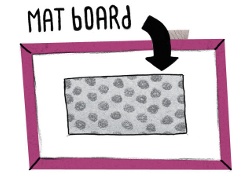
Mat board
Composed of bound papers, this material keeps your work from coming in contact with the glass that covers it, while providing an attractive border.
Measurements
The dimensions of a piece. There’s a good chance potential buyers will have certain dimensions in mind when shopping for art, so keep these on hand, or in the label text.
Mount board
Backing board. This is the material used to fill up the back of the frame, providing a buffer between the back of the artwork and the world. The board is usually covered with a dust sheet for further protection.
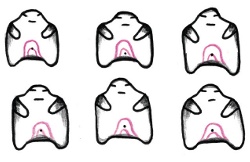
Multiple
Cast sculptures and prints have an important difference from original artworks: they can produce multiple copies, each of which is considered an artwork.
Open edition
A print run that has no specified limit.
Opening night
The preview of an exhibition; the invitation-only event. It’s the time you get to swan around, kissing cheeks, drinking fizzy booze and being slapped on the back. Best stay sober though – this is your gig, remember.
Photography
Professional-looking images of your pieces. You’ll want these for the catalogue, but if you sell work at your show you might not see it again once it’s been encased in bubble wrap – so take photographic records.
Profile
The curves and design of a frame when seen in cross-section.
Rabbet
The inner lip of a picture frame on which everything else rests.

Right-turn bias
Don’t worry if you’re not an ‘ambi-turner’; environmental psychology has observed that, in the absence of other forces, visitors to art galleries have a strong tendency to turn right whenever faced with a choice.
Running order
Think of the exhibition as evolving over time rather than as a static entity: you need to detail timings and ensure everyone has a chance to follow along. Make sure people involved on the production side get a copy.
Shell scheme
This term refers to the walls of an exhibition stand; useful information if you decide to exhibit at a big event.
Statement
The artist’s statement can be, in itself, a work of art. The goal is to give potential buyers an idea of where the work comes from, while at the same time building a mythological space in their mind with the artist right in the middle.
Vitrine
Essentially a pimped-up display cabinet used by galleries to show off work with three dimensions.

Thank you for reading 5 articles this month* Join now for unlimited access
Enjoy your first month for just £1 / $1 / €1
*Read 5 free articles per month without a subscription

Join now for unlimited access
Try first month for just £1 / $1 / €1
The Creative Bloq team is made up of a group of design fans, and has changed and evolved since Creative Bloq began back in 2012. The current website team consists of eight full-time members of staff: Editor Georgia Coggan, Deputy Editor Rosie Hilder, Ecommerce Editor Beren Neale, Senior News Editor Daniel Piper, Editor, Digital Art and 3D Ian Dean, Tech Reviews Editor Erlingur Einarsson, Ecommerce Writer Beth Nicholls and Staff Writer Natalie Fear, as well as a roster of freelancers from around the world. The ImagineFX magazine team also pitch in, ensuring that content from leading digital art publication ImagineFX is represented on Creative Bloq.
